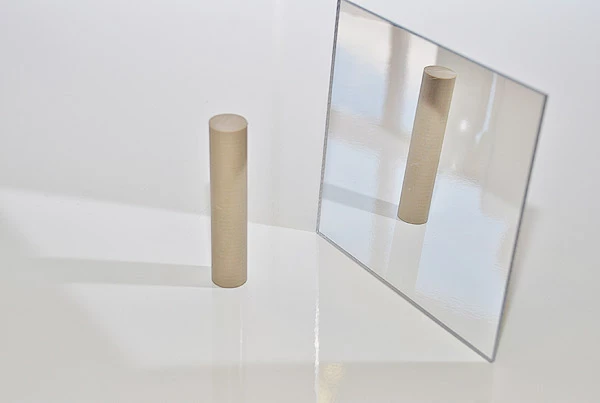To lessen its influence on the environment, the frame industry is concentrating on sustainable materials. Both glass and acrylic frames are common choices, and every one has special qualities. Compared to standard glass frames, acrylic frames are more environmentally friendly. They use less energy than glass, are lightweight, and are immune to breaking, which lowers waste and emissions from transportation. Acrylic can also be recycled, providing a more environmentally friendly choice for its end of life. This contrasts with glass, which can need more resources. The frame sector will greatly lessen its environmental effect by using sustainable materials.
Material Composition
Because they’re lightweight and immune to breaking, acrylic and glass are common materials for frames. While glassmaking necessitates high-temperature melting, which ends up in significant energy consumption and CO2 emissions, acrylic synthesis generates volatile organic compounds. Although acrylic has a reduced initial carbon footprint, its dependence on fossil fuels raises concerns about its long-term sustainability. Glass is a more ecological choice since it is often recycled and used eternally, although it uses more energy.
Energy Efficiency in Production
The energy efficiency of the assembly procedures for acrylic and glass frames varies. Glass frames demand tons of energy, particularly during the melting step, which ends up with a bigger carbon footprint. In contrast, acrylic frames use less energy since they’re produced faster and at lower processing temperatures. While improvements in glass recycling technology can lessen the environmental effect of glass, optimizing the assembly processes for acrylic can increase energy efficiency. When deciding between acrylic and glass, one should take into consideration both the materials’ long-term sustainability and their immediate impact on the environment.
Durability and Longevity
Because acrylic is a lightweight, shatterproof material, its durability is well recognized for frequently outlasting that of traditional glass frames. Due to their toughness, acrylic frames will endure shocks that might normally break glass, extending their lifespan. Furthermore, the sturdiness of acrylic frames lessens the necessity for frequent replacements, which lessens the environmental effect of frame production and disposal. Because acrylic frames are less likely to shatter and take fewer resources to supply and eliminate, they need several advantages over glass frames. This longevity promotes a more environmentally friendly frame technique.
Weight and Transportation
The load differential between glass and acrylic frames impacts the efficiency of shipping. Because acrylic frames are lighter, they use less fuel and emit fewer emissions when being shipped. This promotes environmentally friendly transportation methods and helps maintain a sustainable environment. By using acrylic frames, customers will lessen the carbon footprints associated with shipping operations.
Recall ability and Disposal
Compared to standard glass frames, acrylic frames have a definite recallability profile; nonetheless, the procedures differ by location and belief in the power. With a clearly defined infrastructure for effective collection and processing, glass recycling is skilled. The entire recallability rates of both materials could also be impacted by contamination and clean recycling streams. For expansive designs or industrial needs, large acrylic sheets offer excellent coverage and versatility.
Safety and Breakage
When it involves breakage rates, acrylic frames are far superior to glass since they’re less likely to fracture, which lowers the likelihood of waste and harm. Acrylic is a safer option since broken glass can pose environmental risks, such as the possible leakage of toxic materials into soil and water systems. Acrylic Suppliers UK is essential to the expansion of regional companies and craftspeople also because of the promotion of environmentally friendly practices by using recyclable materials.
Aesthetic Versatility and Style Options
Acrylic frames are appropriate for a variety of shapes and sizes due to their lightweight nature and artistic adaptability. As customers place a better value on eco-friendly activities, this adds to the rising trend towards sustainable design. To enhance customer options and promote a sustainable culture within the planning community, the framing industry is getting to settle on materials that have the smallest amount of negative effects on the environment.
Conclusion
Compared to glass, acrylic frames have major environmental advantages, making them a more sustainable option for patrons. Prioritizing sustainable materials because the framing industry develops is important to make sure that the sector’s development is in line with ecological responsibility and helps create a more sustainable future. You can buy acrylic sheets to create stylish and durable solutions for your home or office projects.

